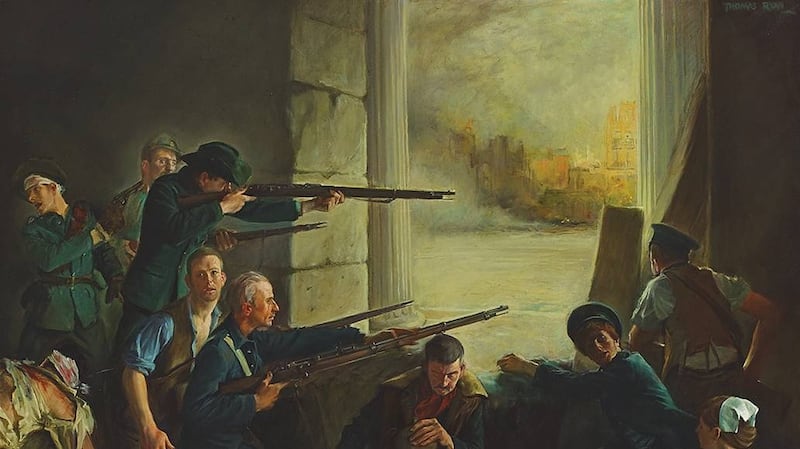Born: September 16th, 1929
Died: September 15th, 2021
The painter Thomas Ryan was born in the heart of Limerick. His family home was on St Joseph's Street, close to the People's Park, though they soon moved to nearby Davis Street, from where he attended the Sexton Street Christian Brothers School. When he was 14 the brothers, recognising his precocious talent, allowed him to skip some afternoon lessons to attend evening drawing classes at the Limerick School of Art, then on O'Connell Avenue. Encouraged by the school head, Richard Butcher, he opted to become a full-time student. Three years' study gave him a thorough grounding in drawing, painting and sculptural techniques. He was equally adept with oil, watercolour and chalk and was a very capable sculptor.
A scholarship enabled three further years at the National College of Art in Dublin. There, another Limerick artist, Sean Keating, was in charge. Influenced by William Orpen, Keating was an imposing, dominant presence, the guardian and proponent of a mode of academic representation centred on classical European painting, with a local inflection and a nationalist emphasis.
By the time Ryan set off to visit museums in Europe in the 1950s, his ideas on artistic orthodoxy were fully formed, and they did not alter during his lifetime. That was not an immediate problem. In the short term, his work was very well received and developed promisingly within the established academic genres: portrait, genre scenes, landscape and still life. His sights were also set on what was traditionally regarded as the foremost genre, history painting.
He was still in his twenties when he made a fine portrait of Éamon de Valera (a courteous sitter, Ryan noted, who set mathematical puzzles for him as he painted). The same year, 1958, he tackled a major historical subject in a huge composition, The Flight of Hugh O’Neill, Earl of Tyrone, and submitted it to the annual Oireachtas exhibition. To his mind, he was making good the lack of authentically Irish history painting, of the kind he had seen throughout Europe. He was taken aback when it took Keating’s intervention to get the work past the selection committee, only to have it consigned to a disadvantageous slot in the Municipal Gallery.
Feeling sidelined
He was in the paradoxical position of being a highly skilled, ambitious artist with an appreciative and growing following who was, he felt with some justification, sidelined by the contemporary Irish art establishment. Against the background of a modernising Ireland, that feeling only grew in the 1960s. His substantial composition The GPO, 1916, was passed over for first prize in a competition marking the 50th anniversary of the Easter Rising (it did take a third-place award).

Temperamentally outspoken, with a caustic wit, he was not prepared to accept this quietly. He saw it as the modish cult of modernism eclipsing traditional values, the latest phase in a lengthy enmity between the RHA and the annual Irish Exhibition of Living Art.
It’s fair to say that his shabby treatment by arts officialdom allied with his core beliefs pushed him, as indeed it pushed the RHA, into a relatively narrow academic identity, one that rejected alternative modes of representational art along with abstraction. His natural artistic home was the RHA, and he was made an associate in 1968 and a full member in 1971.
A continually productive and widely appreciated artist, over time he built a formidable oeuvre of portraits (including one of Sinéad O’Connor aged five), landscapes, still lifes, interiors and genre works, as well as religious and history paintings. His sculptural endeavours included the design of the Dublin Millennium 50p piece, issued in 1988, and the £1 punt coin issued in 1990. In 2006, his Ronnie Delany portrait featured on a 50th anniversary stamp.
From early on he had a strategic sense of the role of the RHA in Irish art. The academy lacked a dedicated gallery following the burning of its premises in 1916. The annual exhibition had to find a temporary venue each year, and the National Gallery of Ireland was increasingly grudging about providing it. In the late 1960s, property developer Matt Gallagher offered to build the RHA a gallery. Raymond McGrath produced a design, and work began on the Ely Place site in 1972, only to grind to a halt with the developer's sudden death in January 1974. Though the Gallagher Group committed to completing the gallery, relations with the RHA became strained because of a prolonged lack of progress.

Big project
Ryan, seeing the importance of the gallery, found himself drawn into the practicalities of completing it. In 1981 he produced a position paper that was openly critical of the Gallagher Group, urging a more proactive approach by the academy. Then the group collapsed, precipitating a crisis. The RHA had to secure ownership of the half-built gallery and then shoulder responsibility for it. Elected unopposed as RHA president in 1982, Ryan threw himself into the project.
Aware that the academy would have to broaden its artistic constituency to succeed, and perhaps to survive, he set about developing alliances. The first exhibition to be held in the concrete shell of the new building was, to the surprise of many, the GPA Emerging Artists Award show in 1984. The first RHA exhibition in Ely Place, the 156th, followed in 1985. That was not the end of the story by any means but, remarkably, by the time Ryan’s presidency ended in 1992, the essentials were in place for the incremental completion of the RHA Gallagher Gallery, a more inclusive approach to its governance and exhibitions, and the modernisation of the RHA.
Ryan exhibited widely, served on many public bodies and committees, and his work is included in numerous collections, public and private.
He is survived by his wife, Mary; children Pearse, John, Ann, Myles, Eavan, and Aengus; sister, Nuala; brothers Justin and Denis; and his extended family.










